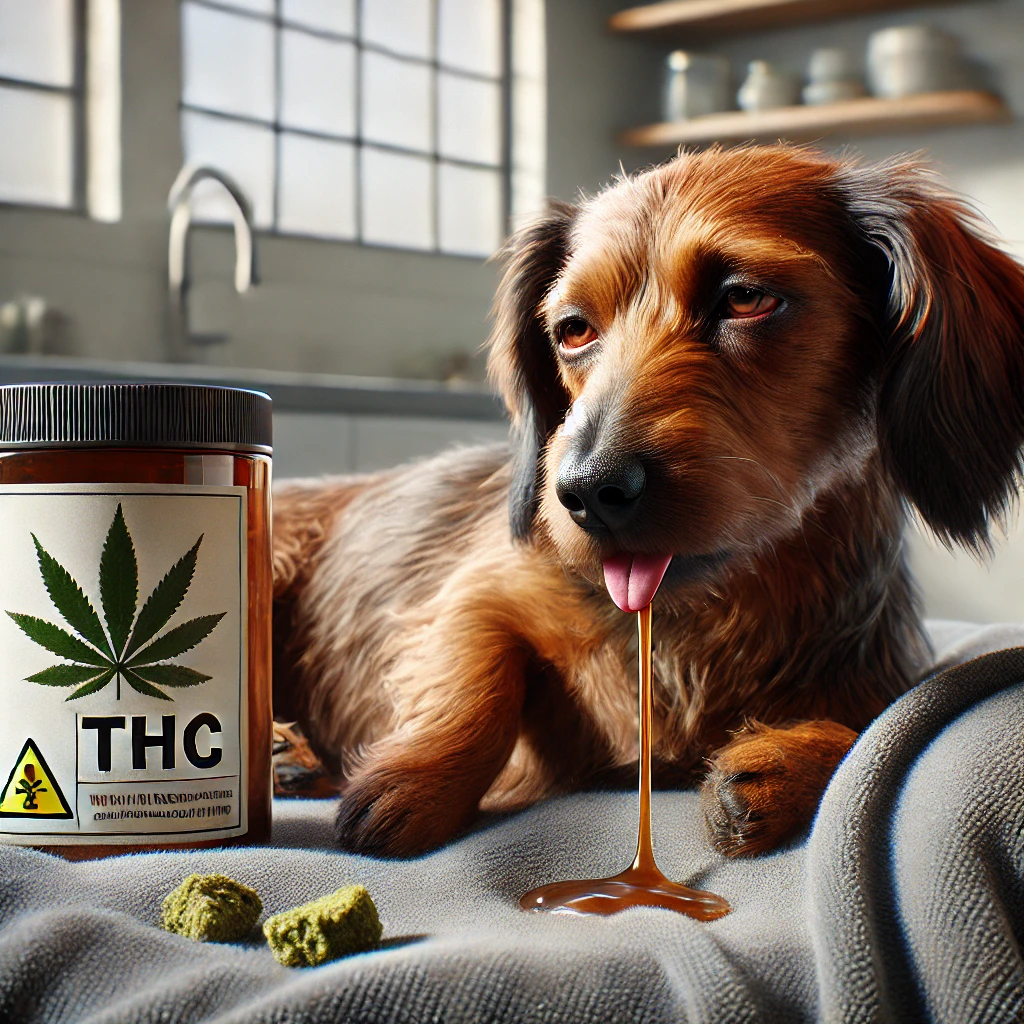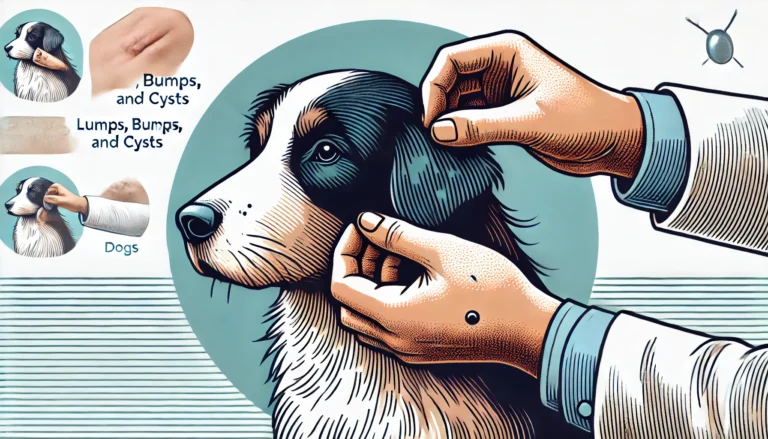cannabis toxicity in dogs

As cannabis becomes more mainstream with its legalization for medicinal and recreational purposes across various regions, its prevalence in homes increases. This accessibility poses new risks, particularly to pets such as dogs, who may inadvertently be exposed to these substances. Cannabis toxicity in dogs is a growing concern, and understanding the signs, symptoms, and preventive measures can greatly reduce the risk and ensure prompt treatment. This comprehensive guide serves as an essential resource for pet owners to safeguard their dogs against the potential dangers of cannabis.
What is Cannabis and Its Effects on Dogs?
Cannabis, sourced from the Cannabis sativa plant, includes substances like delta-9-tetrahydrocannabinol (THC) and cannabidiol (CBD). THC is psychoactive and responsible for the high associated with cannabis, while CBD is noted for its potential therapeutic effects without inducing a high. In humans, these compounds can provide pain relief and help with various medical conditions. However, dogs process THC differently and can suffer from cannabis toxicity even from small amounts. Their heightened sensitivity is due to a greater concentration of cannabinoid receptors in the brain, making them more susceptible to the adverse effects of THC.

Common Causes of Cannabis Toxicity in Dogs
Cannabis toxicity in dogs most commonly occurs through the accidental ingestion of cannabis products, including edibles, plant material, and concentrates. Dogs can also be exposed to THC through secondhand smoke or contact with cannabis residue on their owner’s skin, clothing, or household surfaces. Additionally, some pet owners might unknowingly expose their pets to THC or CBD through products intended for human use, believing they may help their pet without understanding the toxic implications.
How Cannabis Toxicity in Dogs Occurs?
When dogs ingest cannabis, THC binds to cannabinoid receptors in the brain, which are more abundant than in humans. This binding disrupts normal neurotransmitter function, leading to various physiological and neurological symptoms. The endocannabinoid system, which these receptors are part of, plays a critical role in regulating body functions like pain sensation, appetite, sleep, and mood. In dogs, interference in this system by THC can lead to severe health issues, emphasizing the need for immediate medical intervention.
Symptoms of Cannabis Toxicity in Dogs
The symptoms of cannabis toxicity in dogs can vary widely but typically include neurological and digestive disturbances. Physically, a dog may appear lethargic, struggle with coordination, or experience urinary incontinence. Neurological signs might include hyperactivity, disorientation, hypersensitivity to touch or sound, and even seizures. Gastrointestinal symptoms can also occur, such as vomiting or diarrhea, which further complicate the dog’s condition. Recognizing these signs early is crucial for effective treatment.
Table: Detailed Symptoms of Cannabis Toxicity in Dogs
| Symptom | Time to Onset | Duration |
|---|---|---|
| Lethargy | 30-60 minutes | Several hours |
| Loss of balance | 30-60 minutes | Several hours |
| Dilated pupils | 30-90 minutes | Up to 24 hours |
| Seizures | 1-3 hours | Varies |
Diagnosing Cannabis Toxicity in Dogs
The diagnosis of cannabis toxicity in dogs primarily involves a combination of symptom assessment and a thorough history of potential exposure. Veterinarians may conduct physical examinations and, in some cases, toxicological tests using blood or urine samples. However, these tests can be inconclusive and are not universally available, so diagnosis often hinges on observable symptoms and owner reports.
Tips
Unraveling the agony of canine athletics, where a playful sprint can spiral into a battle against painful sprains and strains in dogs!
Treating Cannabis Toxicity in Dogs
Immediate treatment is vital upon suspecting cannabis toxicity in a dog. If ingestion has occurred recently and the dog is not symptomatic, veterinarians might induce vomiting to prevent further absorption of THC. Activated charcoal can also be administered to help absorb any remaining toxins. In cases where symptoms are severe, supportive care, such as IV fluids, anti-nausea medication, and hospitalization, may be necessary to manage the effects and prevent complications.
Prognosis and Prevention of Cannabis Toxicity in Dogs
The prognosis for dogs after experiencing cannabis toxicity is generally positive if treated promptly. Most dogs recover without long-term effects, but prevention remains crucial. This includes securely storing cannabis products and educating everyone in the household about the risks. Awareness and preventive measures can significantly decrease the chances of a dog experiencing cannabis toxicity.
Conclusion on Cannabis Toxicity in Dogs
The increased prevalence of cannabis in homes necessitates a greater awareness among pet owners about the risks of cannabis toxicity in dogs. Through education and responsible cannabis handling, pet owners can ensure their pets remain safe and healthy. This guide provides the knowledge needed to recognize, respond to, and prevent cannabis toxicity, keeping beloved pets out of harm’s way.
What are the symptoms of cannabis toxicity in dogs?
Symptoms of cannabis toxicity in dogs can vary but typically include lethargy, uncoordinated movements, dilated pupils, drooling, vomiting, urinary incontinence, hyperactivity, vocalization, and in severe cases, tremors or seizures.
How much cannabis is toxic to dogs?
The toxic dose of cannabis in dogs is not well defined because it varies widely depending on the individual dog’s size, overall health, and the concentration of THC in the product. Even small amounts, particularly of products high in THC, can be toxic to dogs.
What happens if dogs eat cannabis?
If dogs eat cannabis, they can exhibit signs of toxicity as mentioned above. The THC in cannabis affects the nervous system, leading to symptoms ranging from mild (such as lethargy and disorientation) to severe (such as seizures). Immediate veterinary care is crucial to manage symptoms and prevent more severe complications.
Is cannabis oil toxic to dogs?
Yes, cannabis oil can be toxic to dogs, especially if it contains THC. Cannabis oil products vary in their concentration of THC and CBD, and those with higher THC levels pose a greater risk of toxicity.
Is it safe to smoke cannabis around dogs?
No, it is not safe to smoke cannabis around dogs. Secondhand smoke can lead to cannabis toxicity, and the particulate matter from smoke can also irritate a dog’s respiratory system.
Can a dog recover from poisoning?
Yes, a dog can recover from poisoning with timely and appropriate medical intervention. The prognosis is generally good if the dog receives veterinary care soon after exposure. Treatment typically involves supportive care like fluids, medications to manage symptoms, and in some cases, activated charcoal to reduce toxin absorption.






